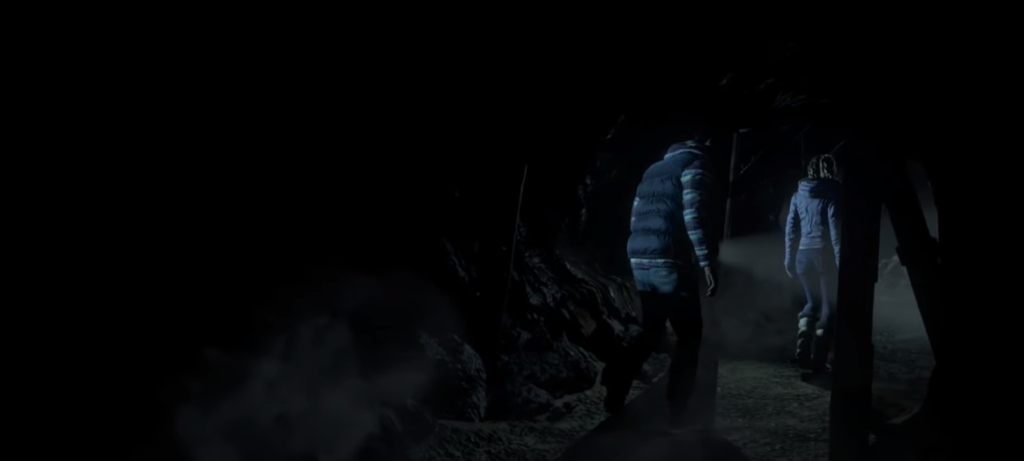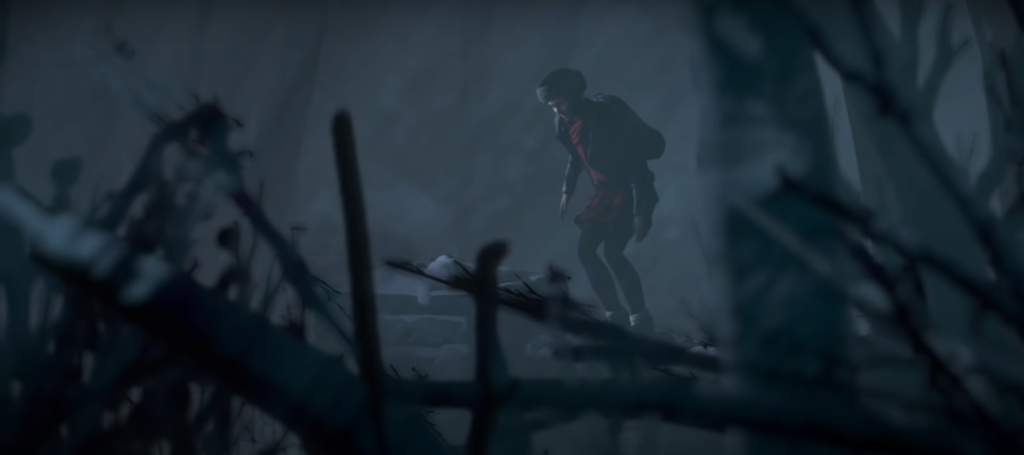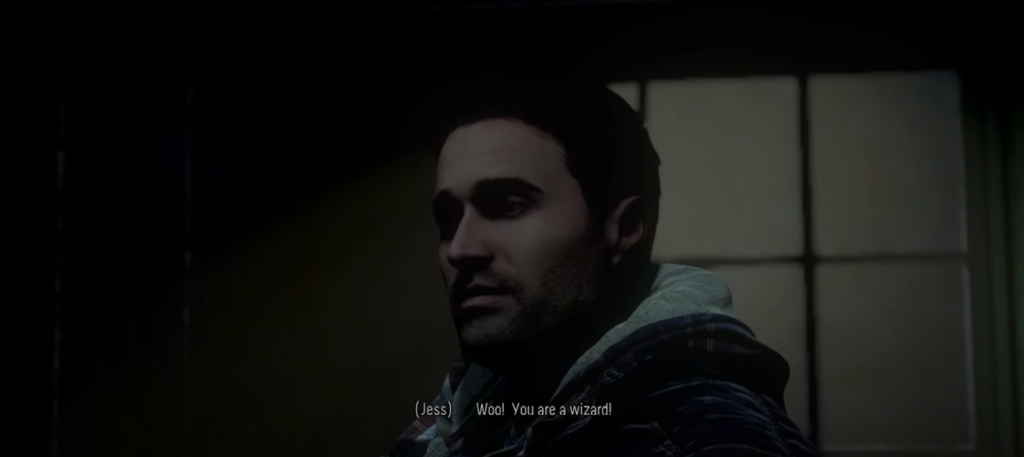While playing Until Dawn and reading about it for this class, we’ve been thinking about and discussing the game in terms of how “movie-like” it is, with our reading going so far as to call the game an interactive movie. Of all the games that we’ve played, Until Dawn is the most cinematic, thanks to some developmental choices that make it different from an interactive fiction game or walking simulator like Gone Home. I thought that I would take this film-centric approach of analysis to the cinematography of the game itself, and try to trace some of the game’s influences from the horror genre of film.

A chief aspect of what I believe makes Until Dawn feel like an interactive movie is the implementation of fixed camera angles, much in the style of other horror games like Resident Evil. The reason that this makes the game feel more “movie-like” is the aspect of power over the cinematography, claimed here by the game developers and not the player. In many areas of the game, the player only has control over what they shine the flashlight on, and how quickly they move through the space. This allows for very menacing shots like the one above, which emphasizes the scope of the woods’ darkness in comparison to Mike and Jess. An interestingly composed shot, really only available thanks to fixed camera angles.

A staple of horror movie cinematography is the “monster’s POV shot,” in which the camera goes from a sort of “objective” third person following of a character to a first person shot from the perspective of the monster/murderer that is tracking that person. The shot above is just one example from Until Dawn, in which we see Sam from her stalker’s POV, with shaky-cam and ASMR breathing to boot. You can see this technique in movies like Jaws, Halloween, The Evil Dead, Friday the 13th, etc. The list goes on. The technique is widespread as it adds a menace to an (assumed) safe environment; we know someone is watching, unseen by our aligned characters.


Last but not least, we have our jump-scares. These are sprinkled in just about everywhere, but they are not all made equal. Some jump-scares (like the creature running out of the deodorant cabinet) are entirely in-cutscene, while others like the one above actually require player interaction to go off. The scene above prompts you, quite suddenly, to move Mike from his position in the foreground. While I was playing I didn’t think much of it and put in the command, only to find this creep in the background, out of Mike’s eye. This is just another take on the POV shot from before, only you see the monster from a third-person perspective this time. The stalker from before takes form in a split second, a blemish on the regular story.
Those were just a few cinematic techniques that I noticed the developers chose to use to make this game feel both more movie-like, and more horror-movie-like. There is a wealth of other tropes to look at in this game, and I’d love to see what others come up with in the comments!
(All pictures taken from RabidRetrospectGames’ YouTube walkthrough of Until Dawn. URL: https://www.youtube.com/watch?v=azPQMuboaJ0&t=4661s)


I totally agreed with you on how Until Dawn achieved such a great cinematic effect, and the fixed camera angles really played such an important role in making the video-game as film-like as it currently is. However, a big qualm that video-game players have against fixed camera angles is that it takes away from the autonomy of the player, and fixed camera angles take away so much from the playing experience. In a large way, the game maker uses fixed camera angles to direct the overall journey of the movie back to where they want it to go. rather than where the player wants it to go. I think it would be interesting to be able to explore further into how autonomy plays into the idea of video-games becoming more or less film-like, and whether it is possible to have a film-like video-game like Until Dawn have complete player autonomy, or would that take away from the film qualities in totality?